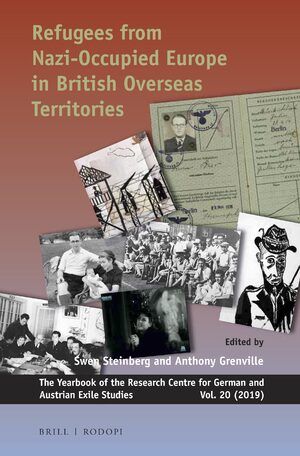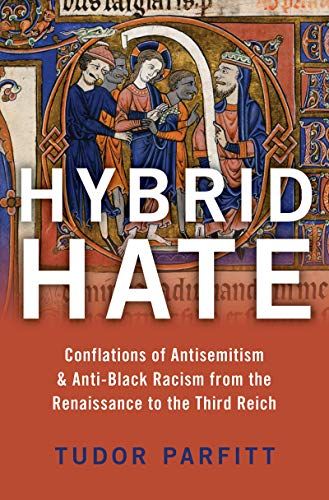
This is a fascinating, ambitious and original attempt to systematically draw scholarly attention to non-Western escape destinations of (predominantly Eastern) European Jews, specifically British Overseas Territories. A relatively small group of Jews tried to flee Europe after the Nazi-regime came to power in the 1930s. This volume is the result of a conference organized by the Research Centre for German and Austrian exile studies, entitled “Emigration form Nazi-occupied Europe to British Overseas Territories,” which took place at the University of London in September 2017. Although in the last couple of years more studies have appeared on the “forgotten” escape destinations of European Jews in the Far East and the West-Indies, it is still a relatively new research theme. It started with studies into mainly British overseas territories but is not limited to that area anymore: for example, the Philippines, the Dominican Republic and the former Dutch East Indies have recently received scholarly attention.1
All these studies share the implicit goal of bringing previously strictly separated worlds together under one research framework: the events in Europe during the Second World War are analyzed trans-nationally with events in what was still at that time the colonial world. This is epitomized by the physical movement of European Jews to this world, which brought about a clash between the categorization systems of the West (that perceived Jews as Western) and those of the colonial East (that sometimes perceived Jews as Eastern). The exceptional phase of the Second World War put further pressure on already tense relations. How did these cultural encounters play out, how did Jews fit in the hierarchical colonial scheme and how did that scheme impact their relations with several communities in the colonial society? This Jewish quest for refuge provided for knowledge transfer of new ideas and their social and cultural translations to new places.
In this approach, not only the topic is broadened to cover more non-Western escape destinations, the research period is also extended. New research does not only establish the circumstances before the decision to flee is taken, but it also increasingly focuses on Europeans Jews’ lives after their successful escape. Did they transmigrate, remigrate, or migrate to Israel when it was established in 1948? A typical course of events for many European Jewish refugees was to move from country to country until they found one where they could stay indefinitely. When their applications were rejected, after a while they usually tried the next neighboring country, moving continually and magnifying the feeling of desperation.
The book is divided into two parts: the first is more concerned with general experiences of European Jewish refugees, and in particular what kind of regulations and conditions they came across in various British Overseas Territories. This part briefly discusses the unexpected internment of German Jewish refugees as enemy aliens, and the often strict British adherence to the principle of no distinction between Jewish and non-Jewish German internees, the reason being that British authorities were in general too scared of potential fascist saboteurs among both Jewish and non-Jewish Germans. The second part covers the probably more well-known cases of literary, musical and artistic refugees. These fascinating, vividly described stories include, among others, writer Willy Haas’s life in colonial India and organist Werner Baer’s stay in colonial Singapore. In this part there are also two very original papers in German on the puppet theater and the special type of architecture that Austrian refugees brought to Australia, as well as the movie Children of the World that two Austrian movie makers shot during their exile in Shanghai. Nevertheless, these chapters display a comprehensive bias, which in my opinion should have been acknowledged more explicitly in the introduction. I wonder why so much focus is placed in this volume on the cultural contributions European Jewish refugees made to British overseas territories. Not all European Jewish refugees were artists, and many other highly educated refugees were lawyers, journalists, engineers, among other professions. Obviously, these refugees left many written traces, because it was exactly their specific talent that gave them the permission to stay. But what happened to non-creative/artistic or less talented refugees? What was the role of Jewish organizations in that respect, for example local branches of the Joint Distribution Committee? That part of the story seems to me to be partially missing. Recently, Joanne Cho has edited a volume on musical entanglements between Germany and East Asia,2 In that volume the research focus seems to me somewhat more structured and specific.
The chapters, especially those in the first part on conditions and regulations, lean to a considerable extent towards the “white dominions:” Australia, Canada and New Zealand. Probably, most of the primary source material is related to those territories, but it leaves the reader wondering what were the general conditions and parameters in Kenya, India and Singapore, since in the chapters on these countries those general conditions are only referred to in passing. To take the perspective of the refugees themselves is an admirable approach, but that one testimony of a Jewish Bulgarian family, at the end of the first part, which eventually chooses to go to Israel, albeit telling and fascinating, seems to me a bit randomly chosen. Covering both Asia and Africa under the same overarching framework, provides for a complete picture that can potentially show all transnational connections.
In the introduction to this volume a lot is promised and this book does indeed contain some very illuminating and innovative chapters. Unfortunately far from everything that is announced at the beginning is delivered in the rest of the volume. This is probably due to the fact that the broad, pioneering introduction is more a description of a new research agenda than a mere introduction to the volume at hand. It includes many exciting new research avenues, and new theoretical points of departure which could never be covered in only one book. To my mind, it would have been especially fruitful to adopt a more systematic and balanced comparative approach to the experiences of European Jewish Refugees in the colonial world in Asia, Africa and Latin America around the beginning of the Second World War. Thus, this study (and this summary review) must be definitely taken as an encouragement and a point of departure for further research
1 Liesbeth Rosen Jacobson, “ ‘A welcoming refuge?’ The experiences of European Jewish refugees in the Dutch East Indies, set against other Asian destinations, 1933-1965,” Jewish Culture and History 22, no. 2 (2021): 154-173; Therese M. Sunga, “The Refugee Archipelago? Political responses in the Philippines to forced migration in the twentieth century” (PhD diss., University of Manchester, 2021), full text available, accessed November 17, 2022, https://www.research.manchester.ac.uk/portal/files/194688610/FULL_TEXT.PDF; Marion A. Kaplan, Dominican Haven: The Jewish Refugee Settlement in Sosúa, 1940-1945 (New York: Museum of Jewish Heritage-A Living Memorial to the Holocaust Press, 2008); Thomas Pegelow Kaplan, “Global Jewish Petitioning and the Reconsideration of Spatial Analysis in Holocaust Historiography: the Rescue Case of the Philippines,” in Resisting Persecution: Jews and their Petitions during the Holocaust, eds. Thomas Pegelow Kaplan and Wolf Gruner (New York: Berghahn Books, 2020), 157-181.
2 Joanne Cho, ed., Musical Entanglements between Germany and East Asia: Transnational Affinity in the 20th and 21st Centuries (Cham, Switzerland: Palgrave Macmillan 2021).
